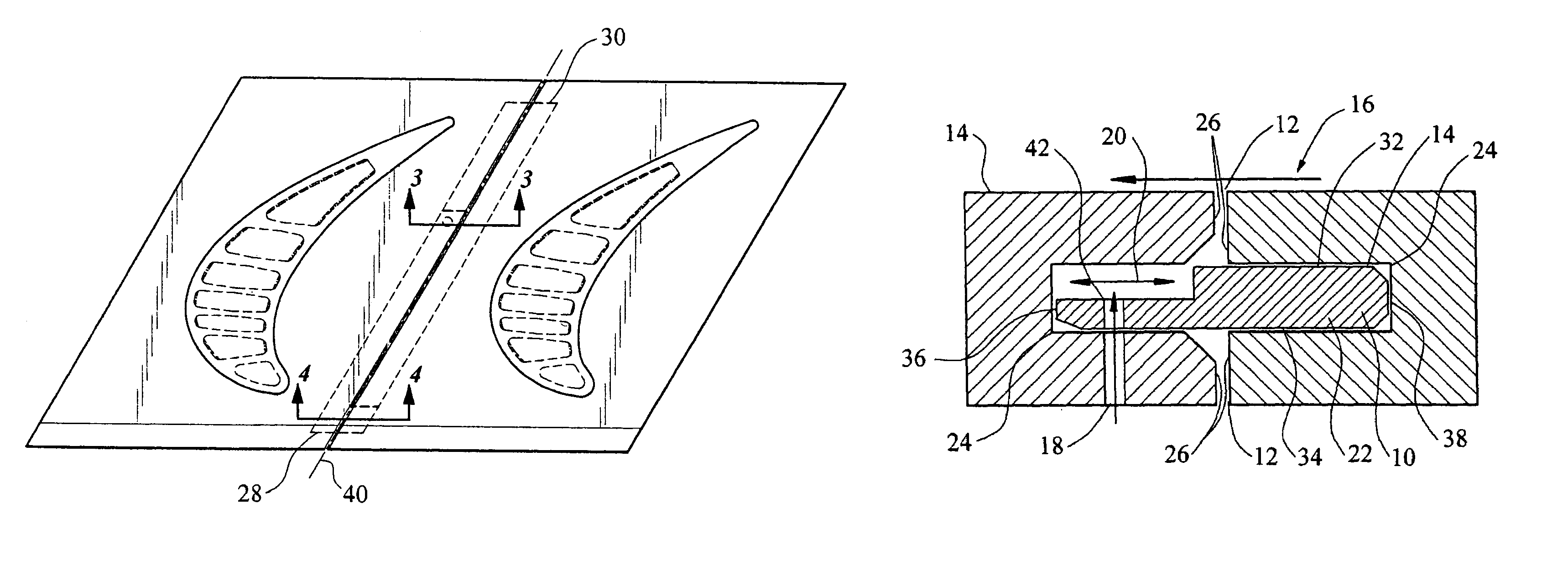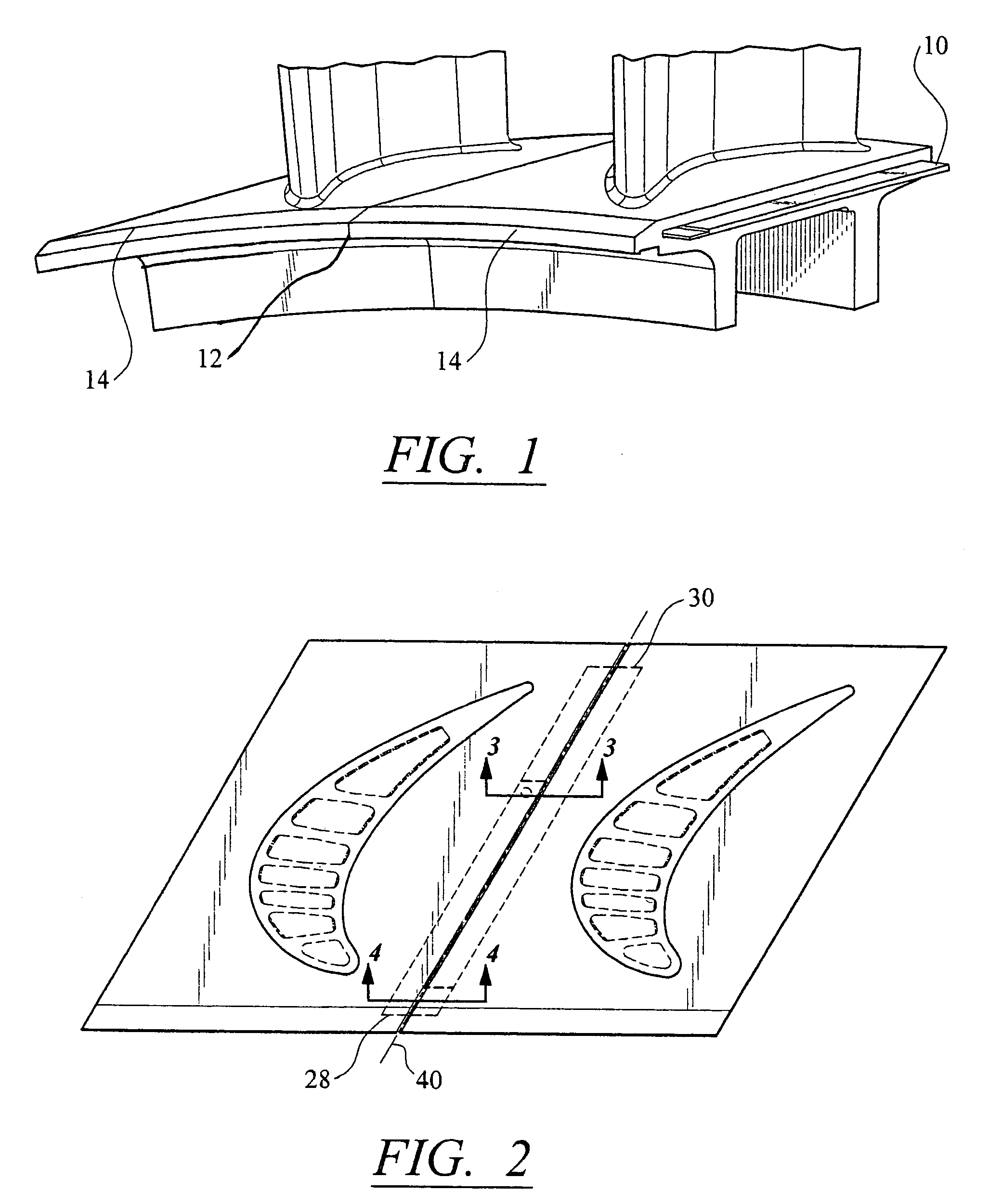Cooling system for a seal for turbine vane shrouds
a technology of cooling system and turbine vane, which is applied in the field of turbine vane, can solve problems such as the increase of components' temperatur
- Summary
- Abstract
- Description
- Claims
- Application Information
AI Technical Summary
Benefits of technology
Problems solved by technology
Method used
Image
Examples
Embodiment Construction
[0016]As shown in FIGS. 1–4, this invention is directed to a seal 10 for sealing gaps 12 between turbine vane shrouds 14, which may also be referred to as shroud segments that collectively form a shroud in a turbine engine. The seal 10 includes a cooling system 16 for removing heat from the seal 10 to prevent premature failure of the seal 10, the turbine vane shroud 14, and the turbine vane. The cooling system 16 may be configured to receive cooling fluids, which may be, but are not limited to, air, from one or more cooling fluid supply ports 18, pass the cooling fluids through the cooling system 16, and exhaust the cooling fluids through a gap 12 between adjacent turbine vane shrouds 14.
[0017]As shown in FIG. 2, the seal 10 may be formed from an elongated body 22 configured to fit into seal grooves 24 on side surfaces 26 of the turbine vane shrouds 14. The seal 10, as shown in FIGS. 2 and 3, may have a first end 28 and a second end 30 generally opposite the first end 28, a top surf...
PUM
 Login to View More
Login to View More Abstract
Description
Claims
Application Information
 Login to View More
Login to View More - R&D
- Intellectual Property
- Life Sciences
- Materials
- Tech Scout
- Unparalleled Data Quality
- Higher Quality Content
- 60% Fewer Hallucinations
Browse by: Latest US Patents, China's latest patents, Technical Efficacy Thesaurus, Application Domain, Technology Topic, Popular Technical Reports.
© 2025 PatSnap. All rights reserved.Legal|Privacy policy|Modern Slavery Act Transparency Statement|Sitemap|About US| Contact US: help@patsnap.com



